The Pixies are, without a doubt, one of the most enigmatic alternative rock bands out there. They carved their own spot in the history of this music style with amazing songs, psychedelic lyrics, clever hooks, and great guitar tones.
Maybe, you’re like me, sitting at home, playing records, and trying to mimic the audio of your heroes. If that’s the case, and you’ve been trying to play “Where is My Mind”, “Monkey Gone to Heaven”, “Debaser” or “Wave of Mutilation”, you’ve come to the right place.
I’m going to dive deep into the tone tools Joey Santiago and Black Francis use to propel this band’s uncanny sound forward.
Table of Contents
Joey Santiago Guitars
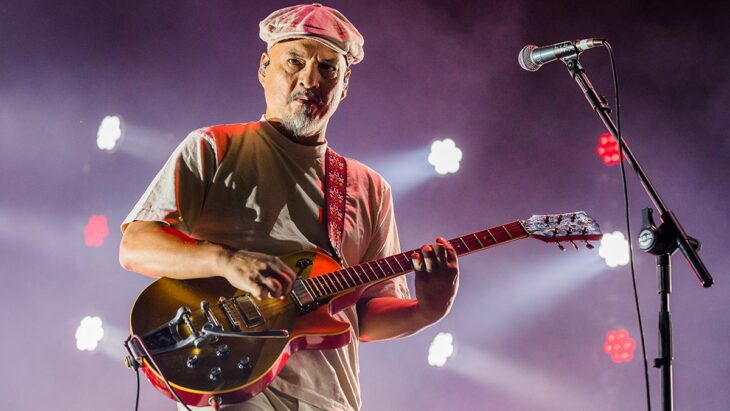
Joey Santiago is a weird jewel in the alternative rock crown. How so? Well, very simply because this musical scene is completely dominated (and has always been) by offset Fender guitars and Joey plays Gibsons.
Let me tell you about Joey’s main three guitars.
First, Joey’s quintessential Gibson Les Paul Gold Top. Joey has been playing Les Paul Standard guitars ever since the late ‘80s mega-hit albums Surfer Rosa (1988) and Doolittle (1989). These albums are hit collections and skyrocketed the Pixies to alternative music royalty.
The guitar Joey plays is entirely stock, except for the pickups, which he replaced with Bare Knuckle pickups.
If you have the budget for it, a Gibson Les Paul Standard Gold Top should be your first choice. Other than that, a Gibson Les Paul Studio is another great option.
If you’re looking for something more affordable, an Epiphone Les Paul Standard would do the trick as well.
The second guitar is not so common, because Joey plays a Bigsby-loaded Les Paul Custom. Yes, I know, black LP Custom with golden hardware is the closest you get in Guitar Land to wearing a tuxedo and winning an Oscar. Mr. Joey Santiago is an elegant man, playing elegant guitars, I guess.
But the main difference between the Gold Top Standard and this Custom is not the looks, but the wood used for the fretboard. Indeed, ebony has a maple-like snappy tone and cuts through the mix better than a guitar with a rosewood fretboard.
Currently, Gibson doesn’t make a two-pickup LP Custom with a Bigsby, but the next best thing is the absolutely gorgeous Gibson Custom 1957 Les Paul Custom Reissue. Yet, that is one hefty price tag, isn’t it? You could do without the Bigsby and go for a Gibson Custom Les Paul Custom or move over to Epiphone and choose between the Epiphone Jerry Cantrell “Wino”, a regular Epiphone Les Paul Custom, and go for extreme vibrato capabilities with the Floyd-Rose-loaded Epiphone Alex Lifeson.
Finally, Joey’s third guitar is a majestic 1965 Gibson ES-345 with a Bigsby and a Varitone. Gibson doesn’t make any reproductions of a guitar as unique as that one. But the Varitone is a must to nail that sound. Therefore, you can go for a Gibson Custom B.B. King Lucille or a more affordable Epiphone B.B. King Lucille.
What is the Varitone and why is it so important to nail Joey’s sound? I’m glad you asked. The Varitone is a tone control that acts as a filter. It has 6 positions and the frequency being filtered changes with each of them. You’re going from full-bodied sounds in position 1 (bypass) to thin single-coil-like tones in position 6.
Joey plays his ES-345 with the Varitone in position 3.
Bonus Track: Black Francis Guitars
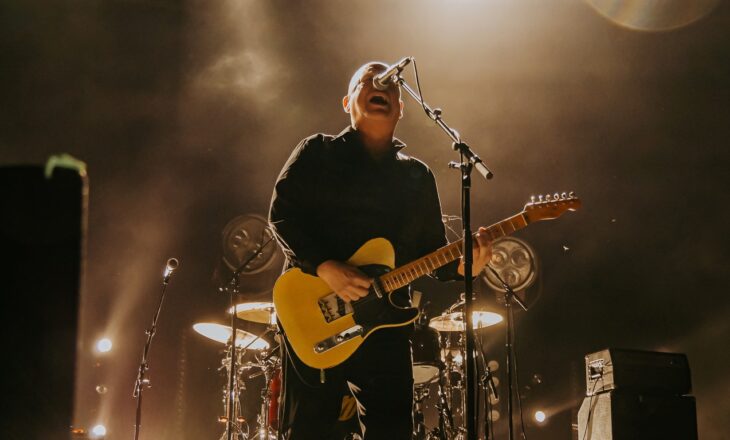
Black Francis isn’t a man of many guitars or a virtuoso but is a completely underrated rhythm guitarist. As the best in the business (Keith Richards, maybe), the Pixies frontman plays Telecasters and acoustics.
He prefers ‘50s Telecasters with traditional configurations and maple necks and Martin dreadnought acoustics with Fishman magnetic pickups.
To get the closest to Black Francis’ tone, you can play a Fender American Vintage II 1951 Telecaster. For a more affordable choice, the Fender Vintera ’50s Telecaster is another great option.
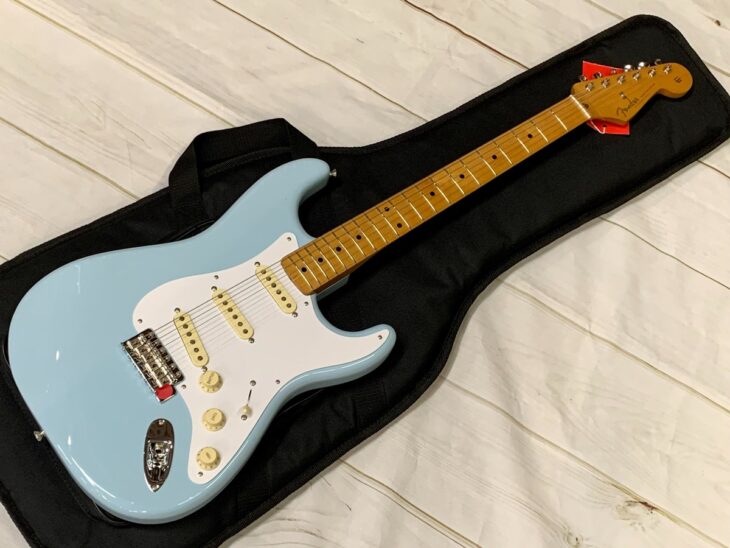
For a more affordable, yet rock-solid possibility, you can also rely on Squier guitars being the Squier Classic Vibe ’50s Telecaster the next best thing and the Squier Sonic Telecaster the most affordable option.
Joey Santiago Effects Pedals
Although Joey Santiago only uses three guitars to cover the vast sonic ground under his responsibility, he plays through a plethora of effects pedals.
To avoid tap dancing around the stage too much, Joey controls all the effects I’m about to name with a GigRig G2.
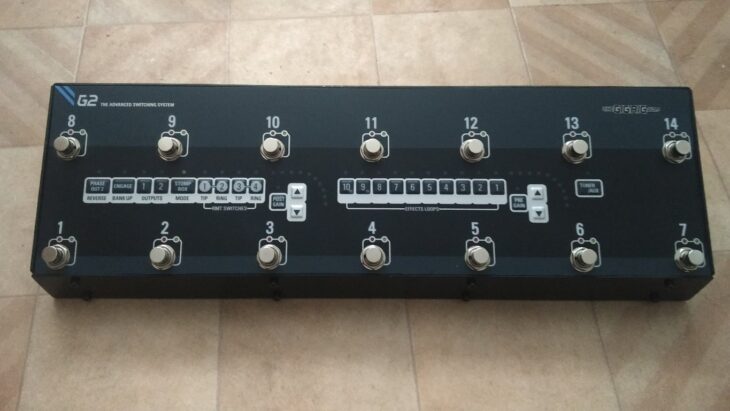
- Boost – Joey uses a boost pedal to raise the signal level rather than distort the signal. He plays an Atomic Boost by Swart Amplifier Co. but you can do it with an Xotic EP Booster or a simple EHX LPB-1.
- Compressor – Joey uses a Keely Compressor pedal to avoid losing signal and to keep the cleans tight and in your face.
- Fuzz – Joey Santiago plays through a strange pedal, the discontinued Boss Hyper Fuzz (FZ-2). You could replace it with the FZ-5 or the FZ-1W.
- Overdrive/Distortion – The pedal of choice in this department (besides the JCM800, but we’ll get there in a bit) is the Fulltone OCD. You can get close to that with a more affordable JOYO JF-02 Ultimate Overdrive.
- Delay – Joey likes analog delay pedals, so he plays through a Maxon Analog Delay which could be replaced with an easier-to-find Ibanez Analog Delay or MXR Carbon Copy.
- Reverb – Besides the reverb coming from the amp (more on that in a bit), Joey adds a Holy Grail Nano Reverb by EHX.
- Tremolo – Again, besides using the tremolo from the Fender amp behind him, Joey plays through a top-of-the-line Empress Effects Tremolo. You could replace it with a more affordable JOYO R-09 Vision.
- The Moog Toys – Moog pedals are, in my opinion, the weirdest, most fun pedals out there. Yes, they’re bulky and awkward, but they sound like nothing else. Joey plays through three of them: MF-105 Midimurf, MF-104 Analog Delay, and MF-108 Clusterfux. Unfortunately, no other pedal sounds like them in the market, so for that weird factor, you have to go for the real deal.
Joey Santiago Amplifiers
Joey Santiago propels weirdness using two different (very different) amplifiers.
On one hand, we have an almighty 50-watt Marshall JCM800 2205 head with a Marshall 1960B 4×12 speaker cabinet. That is a very brown-sounding (AKA AC-DC-approved chainsaw-like midrange) head that’s no longer being made by Marshall. Instead, you can get the next best thing, a Marshall JCM800 2203X.

For smaller places, you can also get a Marshall SC20H Studio Classic, or a Marshall 2525H Mini Silver Jubilee, which are similar-sounding 20-watt heads. For a smaller budget, a Marshall Origin 20 or even a Marshall MG30GFX could be enough.
You can even choose to go without an amp with the UAFX Lion ’68 Super Lead Amp pedal.
On the other hand, Joey plays through an original 1964 Fender Vibrolux Amp. This is a one-of-a-kind with a 2×10” speaker configuration and a layout that’s very similar to that of the Deluxe or Twin Reverb.
That amp has been discontinued by Fender, so in my opinion, the best amp to reproduce it is the Fender ’65 Deluxe Reverb RI or a Fender Hot Rod Deluxe IV, or for a more modest budget and smaller rooms, a Fender Blues Junior IV.
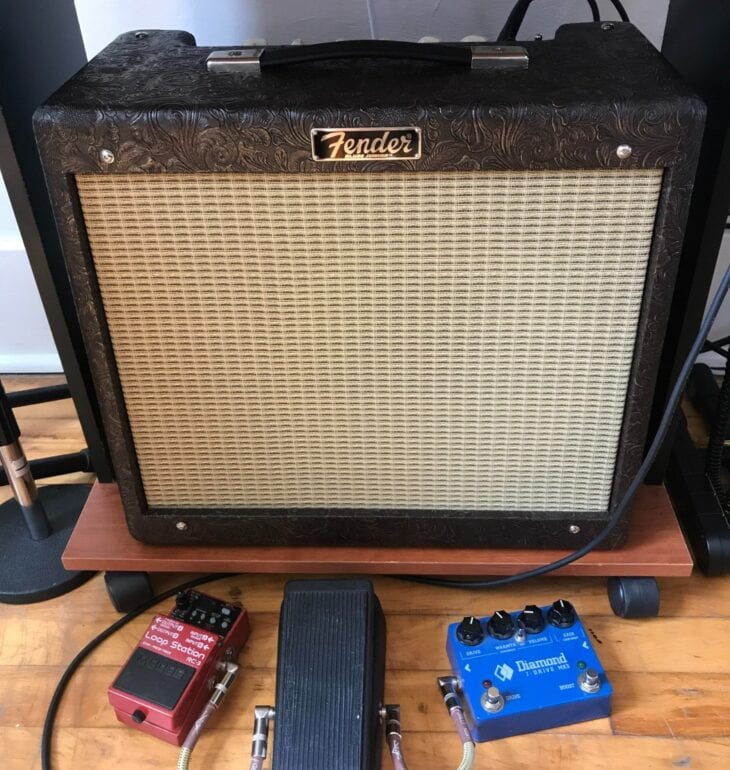
Finally, the no-amp version would be the new Universal Audio Dream ’65 pedal.
Bonus Track: Black Francis Amps
The Pixies’ sound couldn’t be complete without Black Francis’ guitar tones. What does he use for live playing? Well, he plays through a pair of original mid-60s Vox AC-30s. These amps are so old that they come in a head + 2×12 configuration rather than as combo amps.
He plays them with all controls cranked.
Pixies Amp Settings
The settings I’m about to describe cover all the band’s classics including “Where is My Mind” amp settings, “Hey” amp settings, and others like “Monkey Gone to Heaven” or “Here Comes Your Man” too.
Just bear in mind that, to switch between the sounds within those songs, you need to use the pedals described above.Joey does it all with his feet and never touches amp settings.
Marshall Settings
- Presence – 2
- Master Volume – 3
- Reverb – 4.5
Boost Channel
- Bass – 7
- Middle – 5
- Treble – 4.5
- Volume – 7
- Gain – 8
Normal Channel
- Bass – 7
- Treble – 3.5
- Volume – 4
Fender Settings
- Volume – 7
- Bass – 9
- Treble – 6.5
- Reverb – 5.5
- Speed – 4
- Intensity – 5
Joey plugs his guitar into the “Vibrato” channel.
The Bottom End
After so many decades of an impressive career, Joey Santiago’s tone is regarded by many as the pinnacle of alternative music, complementing Black Francis’ impeccable rhythm guitar work. These are some of the tools he uses to create a sonic landscape that can be a good vessel for the Pixies’ weird element and psychedelic, otherworldly lyrics.
Don’t be afraid to let the weirdo out and have fun mixing colors with these cool toys.
Happy (alternative rock) playing!

